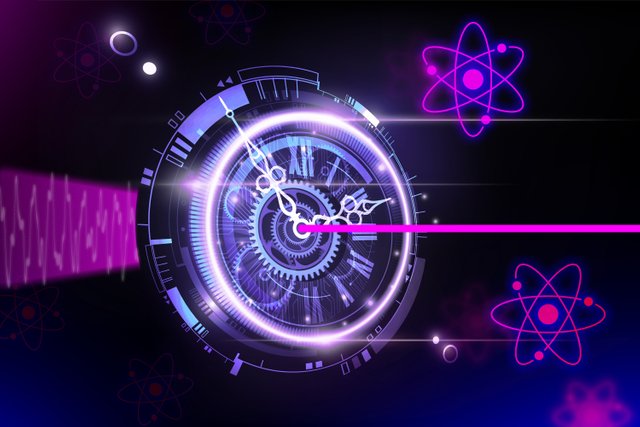
Source
Measuring time is one of humanity's oldest practices, with a history dating back thousands of years. The first clear records of time measurement date back to around 3000 BC, in civilizations such as Egypt, Mesopotamia, China, and India, initially observing the cycles of day and night or the phases of the moon. Later, they began measuring time using sundials, water clocks, and sand clocks, until mechanical clocks were introduced in 13th-century Europe.
Medir el tiempo es una de las prácticas más antiguas de la humanidad, y su historia se remonta a miles de años. Los primeros registros claros de la medición del tiempo datan de alrededor del 3000 a.C., en civilizaciones como Egipto, Mesopotamia, China y la India observando primeramente los ciclos del día y la noche o las fases de la Luna. Posteriormente comenzaron a medir el tiempo utilizando relojes de sol, de agua o de arena hasta llegar a los relojes mecánicos en la Europa del siglo XIII.
As you may have noticed, all these time measurement techniques, and all those invented to date, are based on counting repetitive cycles of a phenomenon. But now an international team of physicists has developed a quantum clock based on a revolutionary method for measuring time without counting seconds like traditional clocks. A quantum clock based on helium atoms excited into Rydberg states by lasers, which measures time without counting cycles.
Como habéis podido apreciar, todas estas técnicas de medición del tiempo y todas las inventadas hasta hoy, se basan en contar ciclos repetitivos de algún fenómeno. Pero ahora un equipo internacional de físicos ha desarrollado un reloj cuántico, basado en un método revolucionario para medir el tiempo sin contar segundos como los relojes tradicionales, un reloj cuántico basado en átomos de helio excitados a estados de Rydberg mediante láseres, que mide el tiempo sin contar ciclos.

Source
The aforementioned Rydberg atoms are "quantum giants," meaning their outer electrons are excited into orbits 1,000 times larger than normal (like moving from a marble to a football stadium!). This eccentricity makes them hypersensitive to perturbations, making them perfect for measuring ultrashort time intervals. A pulsed laser excites helium into the Rydberg state, creating two quantum wave packets that separate.
Los mencionados átomos de Rydberg son "gigantes cuánticos", es decir que su electrón externo se excita a órbitas 1000 veces más grandes que las normales (¡como pasar de una canica a un estadio de fútbol!). Esta excentricidad los hace hiper-sensibles a perturbaciones y por ello perfectos para medir intervalos de tiempo ultracortos. Un láser pulsado excita el helio a estado Rydberg, creando dos paquetes de onda cuántica que se separan.
The packets recombine after a delay, generating interference patterns (like colliding ripples in a pond). The interference pattern encodes the elapsed time in its structure, without the need for an external reference. Like two pendulums swinging out of sync, their crossing creates a unique pattern that reveals exactly how much time passed between their movements.
Los paquetes se recombinan tras un retraso, generando patrones de interferencia (como ondas en un estanque que chocan). La figura de interferencia codifica el tiempo transcurrido en su estructura, sin necesidad de referencia externa. Algo como dos péndulos que oscilan desincronizados, su cruce crea un dibujo único que revela exactamente cuánto tiempo pasó entre sus movimientos.

Source
Instead of accumulating cycles like a metronome, it reads time as an intrinsic property of matter. With the right adjustments, it could measure the time it takes for an electron to orbit a nucleus—about 150 attoseconds, or 150 quintillionth of a second. This would allow, for example, the study of chemical, physical, and biological processes that occur at extremely high speeds, such as molecular reactions and electronic dynamics.
En lugar de acumular ciclos como un metrónomo, lee el tiempo como una propiedad intrínseca de la materia. Con los ajustes adecuados, podría medir el tiempo que tarda un electrón en orbitar un núcleo ~150 attosegundos o, lo que es lo mismo, ciento cincuenta trillonésimas de segundo. Esto permitiría por ejemplo estudiar procesos químicos, físicos y biológicos que ocurren a velocidades altísimas, como reacciones moleculares y dinámicas electrónicas.
For now, this new method of measuring time with excited helium atoms is already working in real-life laboratories, but it remains an experimental prototype. It still faces significant technical challenges, such as controlling the complexity of quantum wave packets and minimizing external interference, as well as expanding its application range. Research and development are still needed to make it reliable, robust, and practical outside the laboratory.
Por el momento, esta nueva forma de medir el tiempo con átomos de helio excitados ya funciona en laboratorios reales, pero sigue siendo un prototipo experimental. Aún enfrenta desafíos técnicos importantes, como controlar la complejidad de los paquetes de onda cuánticos y minimizar la interferencia externa, además de ampliar su rango de aplicación. Todavía falta investigación y desarrollo para que sea fiable, robusto y práctico fuera del laboratorio.
More information/Más información
https://www.sciencealert.com/physicists-found-an-entirely-new-way-to-measure-time